Originally meant for training vines, pergolas have since been solidified as a common addition in outdoor living areas. Modern pergolas often feature an open, slatted design as a way of adding definition to the space — especially with the effect they create using light and shadow. Alternatively, these outdoor structures can consist of roofs, canopies, or other forms of covers to provide additional shade. This can come in handy when temperatures are soaring, and sitting under the pergola would likely result in some very awkward tan lines. And let’s not forget the occasional summer rain which can leave you scrambling your way indoors. A variety of shaded pergola ideas means you can enjoy your outdoor seating area come rain or shine.
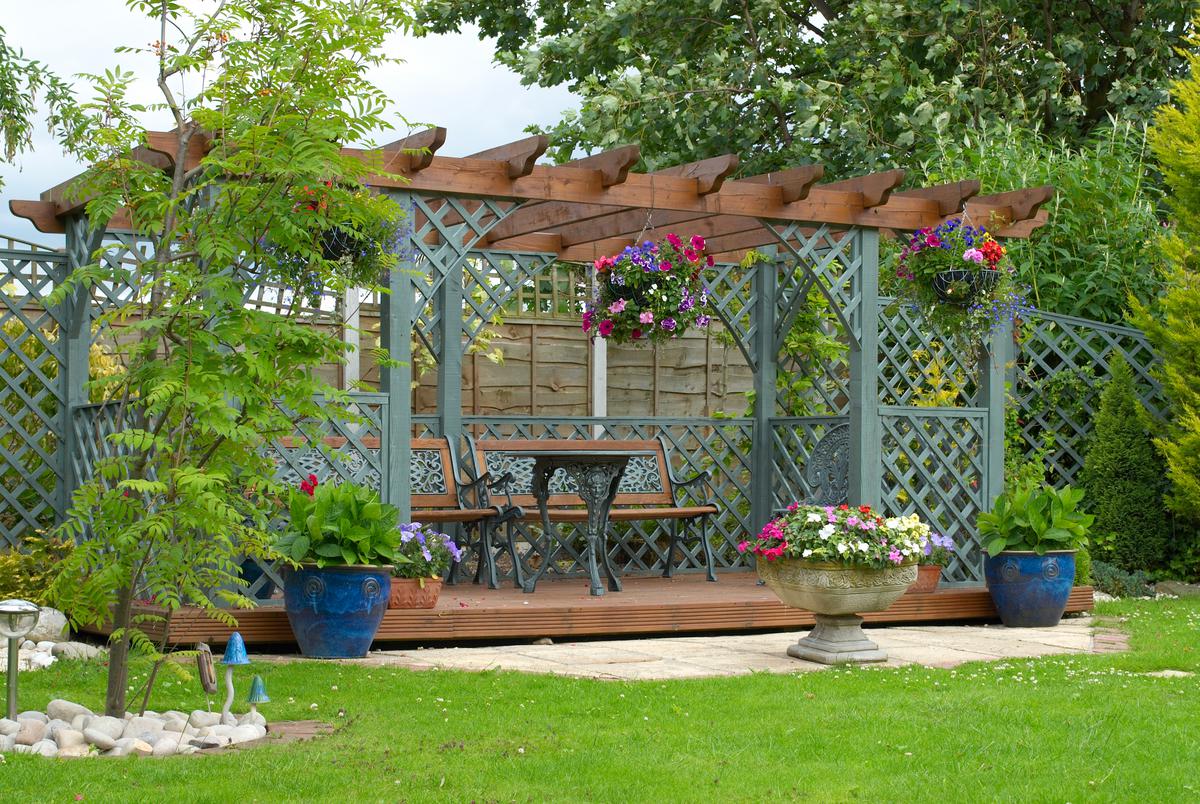
It’s hard to go wrong with natural shade for your pergola.
If you’re adding a pergola in your outdoor spaces, think about placing it somewhere that is already shaded. This will allow you to maintain the bright and airy feel of your new pergola. In other words, you won’t have to make any alterations to it. The natural shade from a nearby tree — or from surrounding trees — will take care of sheltering your seating area from the sun. Simply imagine kicking back on a breezy afternoon with leaves rattling above and you’ll know why this pergola shade idea needs no further justification.
2. Create Shade With a Living Pergola
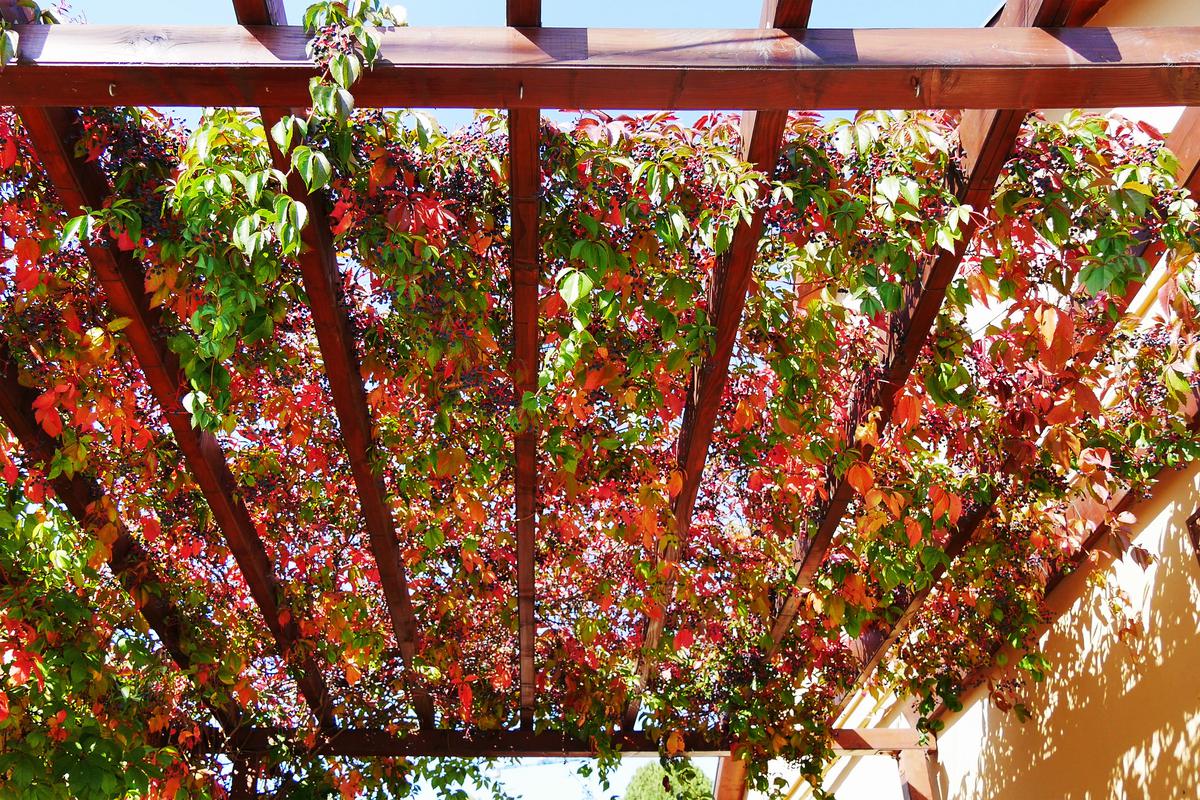
Bring your pergola to life with climbing plants for a natural aesthetic.
One way to add shading for pergolas is to revert back to the original purpose of the structure: growing vines. Pergola canopies adorned with climbing plants create a lush atmosphere that’s not only comfortably cool but also visually satisfying. It’s particularly an aesthetically pleasing shade idea for pergolas if the structure is attached to your house; the view from an upstairs window or balcony can be quite appealing. While there are varieties of climbing plants that you can grow on your pergola, consider going for flowering vines that spread quickly. These will offer both shade and visual interest in the shortest amount of time.
3. Achieve Comfort With a Pergola Tent
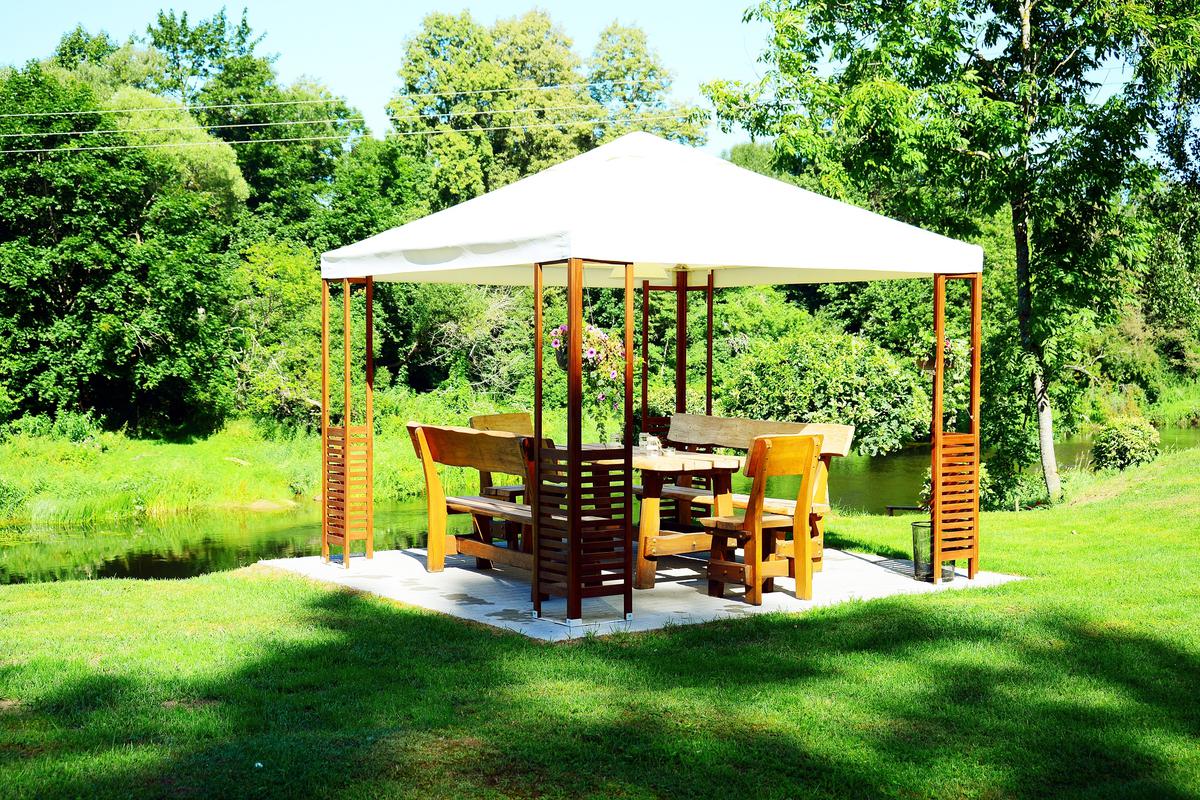
Much like gazebos, pergola tents allow for a comfortable seating area with all the shade you need.
Whether you’re having a backyard gathering or an intimate picnic, a covered pergola can serve as a focal point as well as the ideal zone to escape the scorching sunlight. You can find pergola tents in a range of sizes, making them ideal for summer fun. Besides providing shade from above, these patio shade structures can also come with tied curtains that you can close to create a more cozy setting. Make sure to add a lighting fixture such as string lights if you like to hang out in your pergola tent at night.
4. Go for a Retractable Pergola Canopy
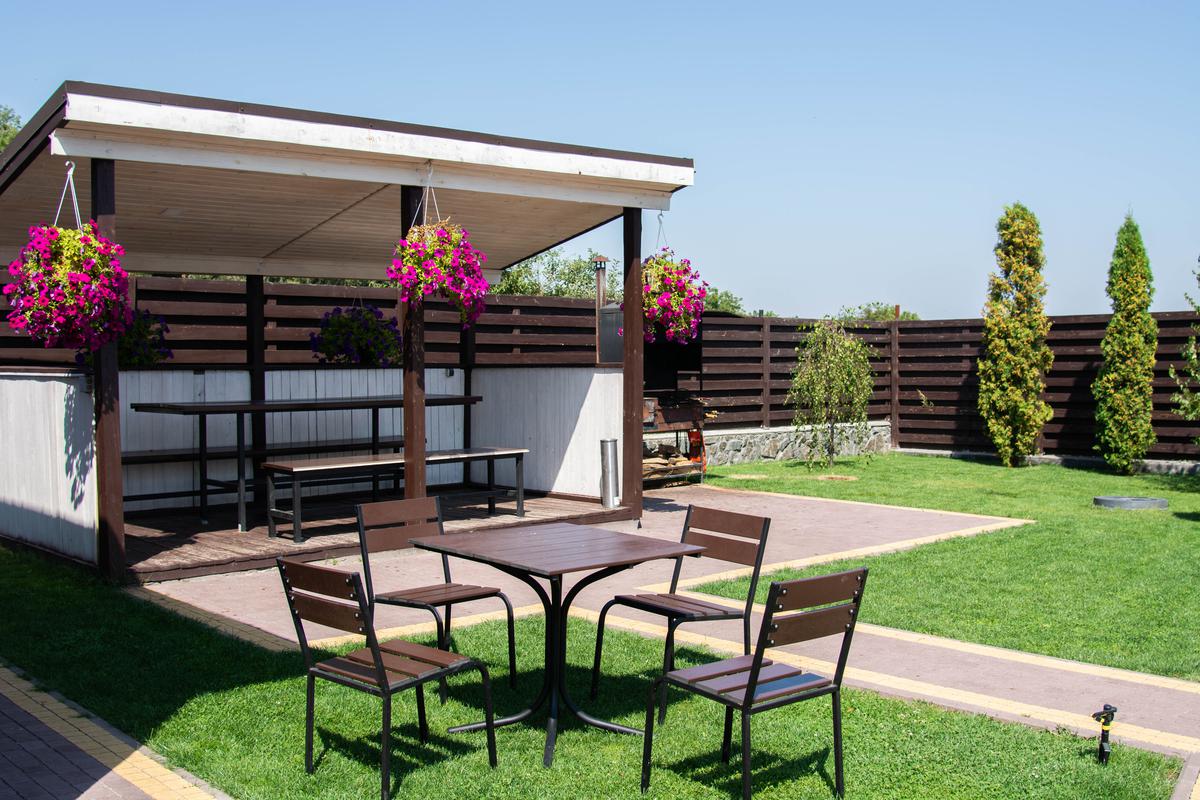
Retractable pergola roofs are ideal if you need to switch between open and covered seating areas.
For a more flexible design, consider going for retractable pergola canopies. These types of covers essentially allow you to have a pergola for shade when necessary, or create a more open atmosphere otherwise. As such, pergolas with retractable covers are ideal if you’re looking to achieve the right balance between shadow and sunlight.
These types of canopies normally feature a casual fabric with enhanced durability. Besides providing shade, they also protect against rain. This basically allows you to preserve your outdoor furniture in addition to creating a year-round seating area. Retractable canopies are available in both motorized and manual functionalities.
5. Use Natural Materials for a Shaded Pergola
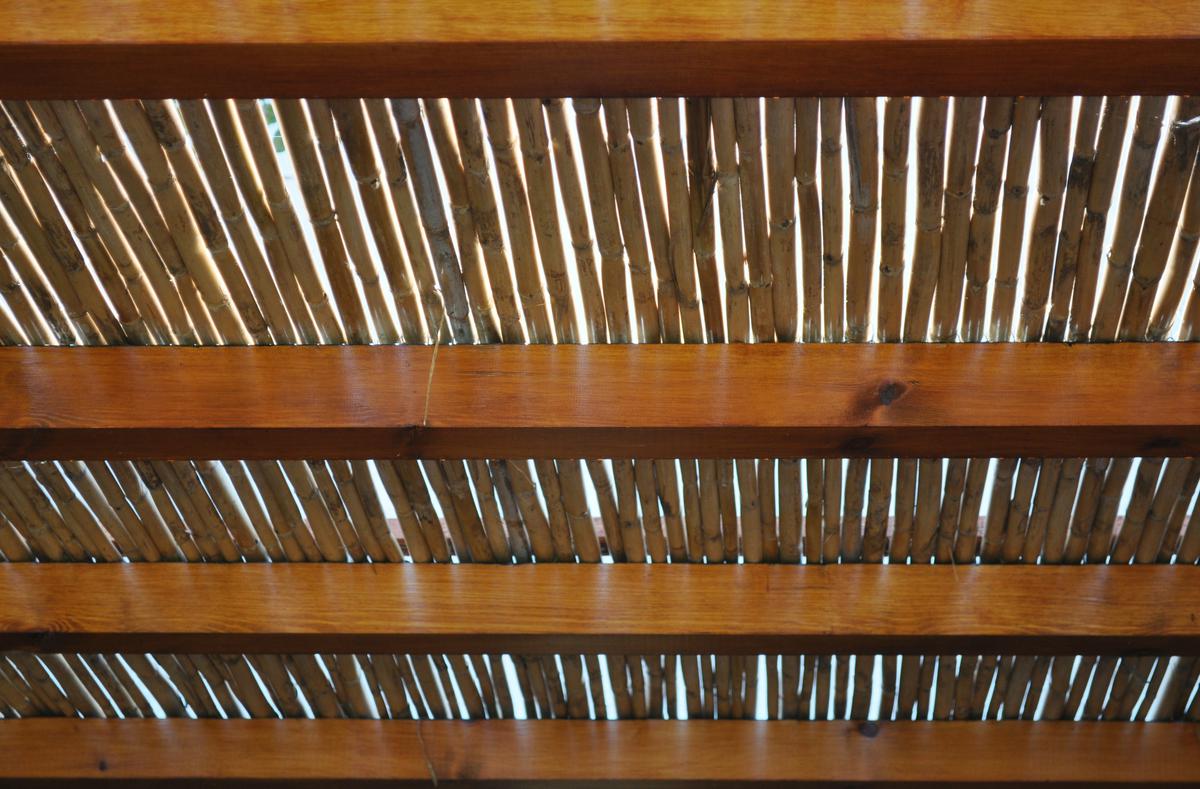
Bamboo is one of the most common building materials in the world and has remained so for centuries.
Another way to add a good deal of shade to your pergola is with natural roofing materials. While wooden beams constitute the main structure of the pergola, a layer of bamboo serves as protection against the harsh sun. The dapples of sunlight that make their way through the bamboo canopy create a charming aesthetic without heating up the space. As an alternative to this sustainable construction material, you can also make use of loose willow branches to form the canopy.
6. Add Drapery to Your Pergola
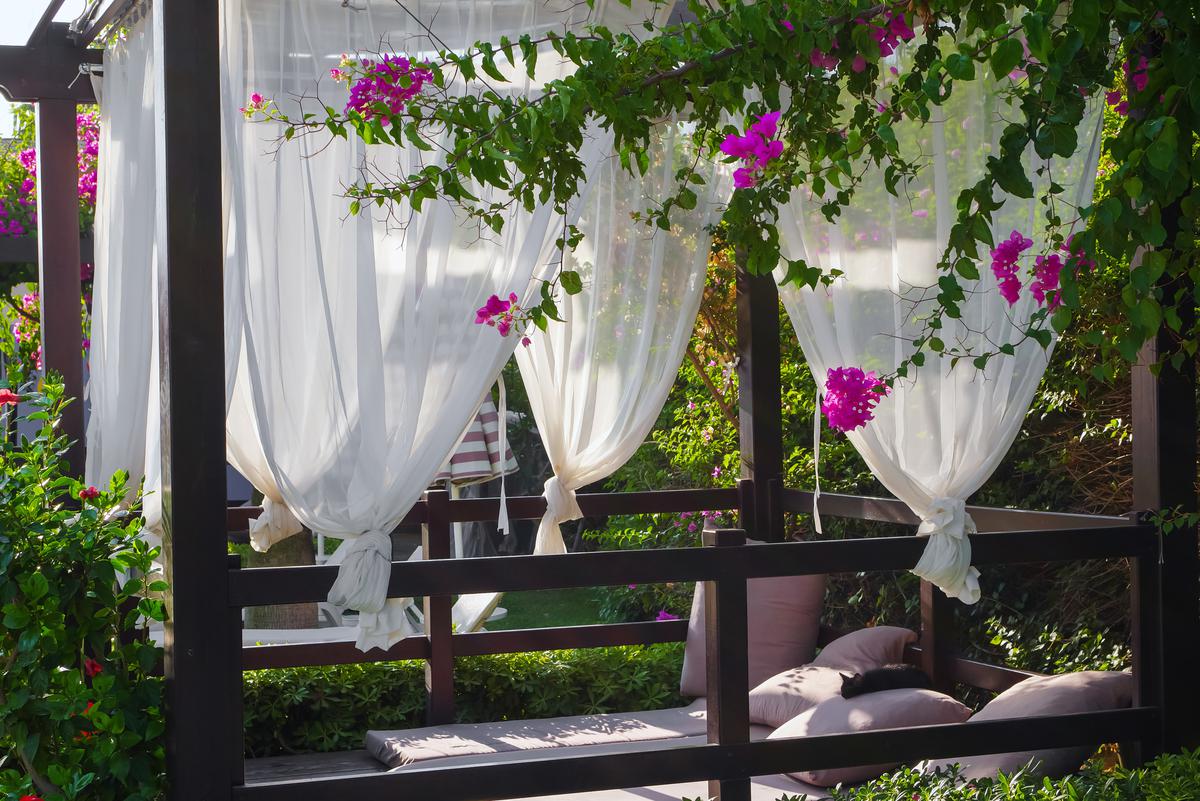
Hanging curtains on your pergola is a quick and easy way to add more shade.
While adding shade from the top of a pergola can do wonders in creating a comfortable atmosphere, it’s also important not to neglect the sides. That’s where sheer curtains come in. Hang them from a set of rails below the framework or directly from the outer beams of the pergola. Besides providing protection from the summer heat, pergola curtains can also inject a touch of softness into the structure. Need more visual flair? Opt for a curtain with a floral design.
7. Enjoy the Flexibility of a Louvered Pergola
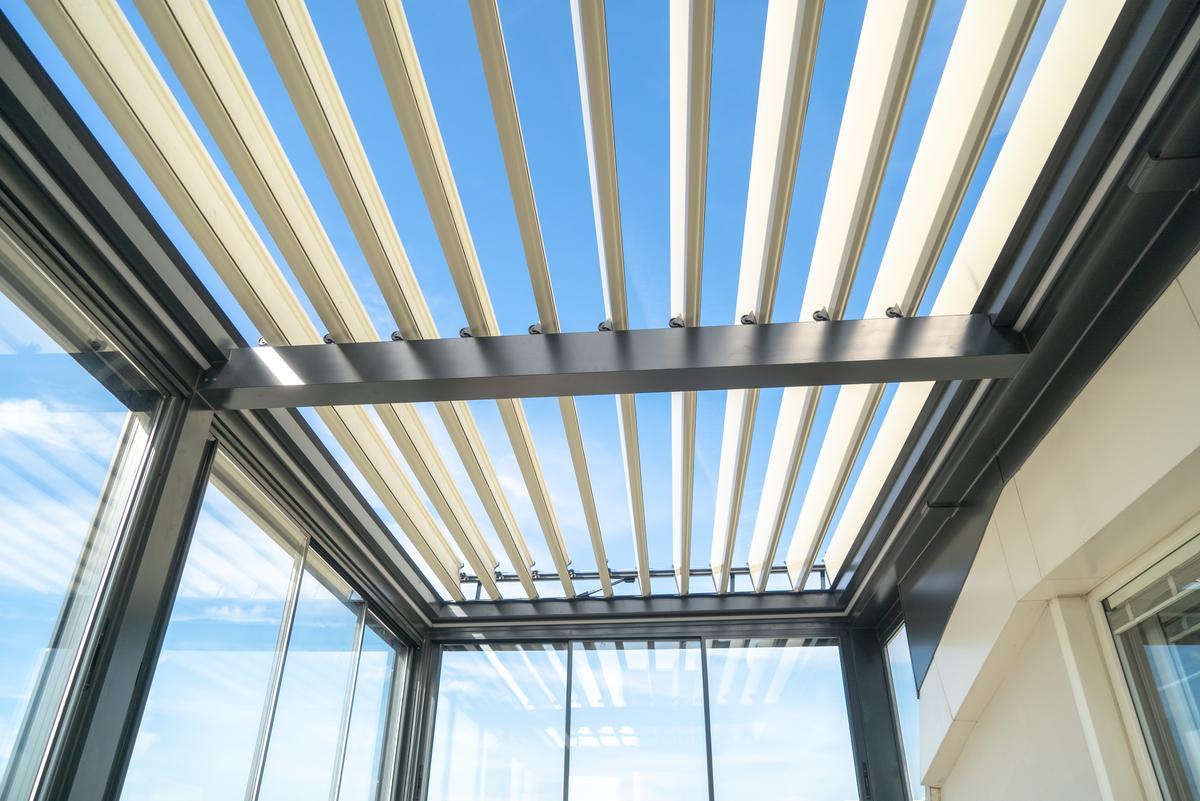
Louvered pergolas provide the flexibility you need when it comes to light and shade.
Retractable canopies aren’t the only way to maximize flexibility. A louvered pergola is another solution that allows you to make adjustments as needed.
Designed to meet a range of requirements, louvered pergola canopies essentially consist of movable beams that you can adjust to alter light and shade. You can leave them fully open for an open-air look, or fully closed to keep out rain and sunlight. As such, this type of pergola cover is ideal if you plan on using your patio space throughout the whole year.
8. Build a Rustic Pergola Roof
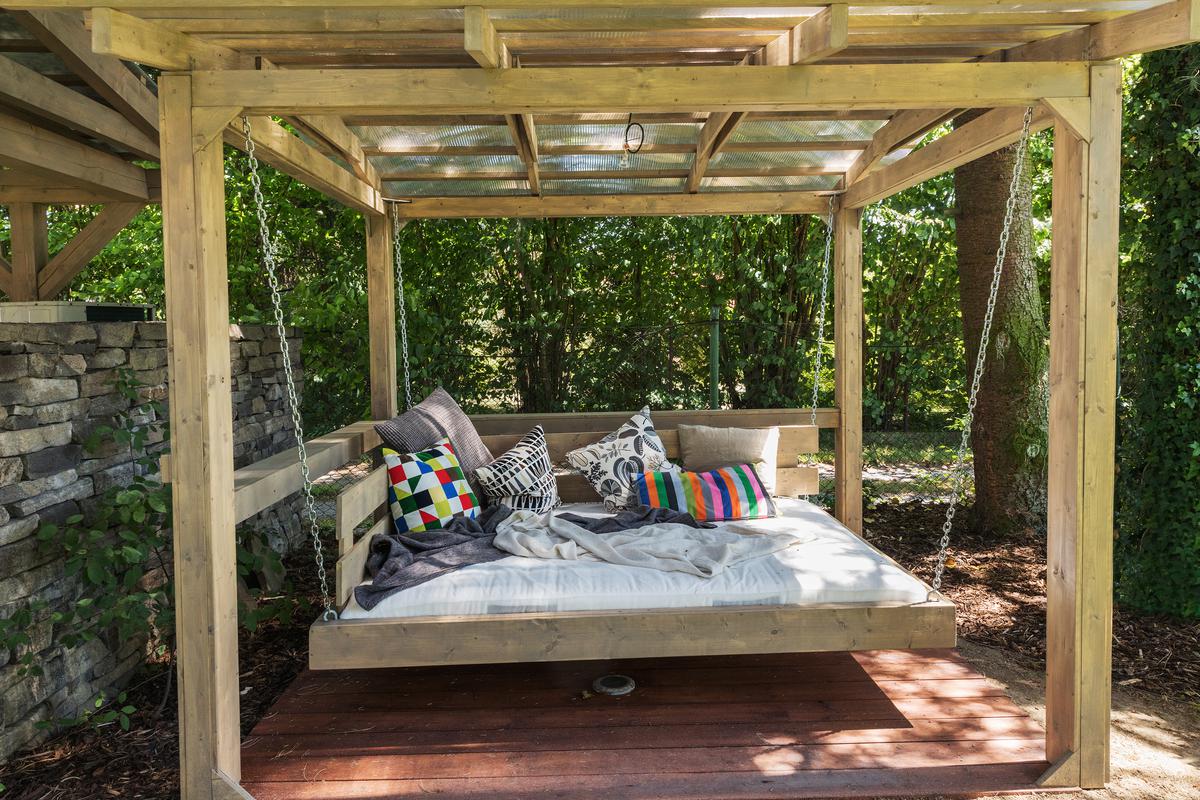
Rustic pergola roofs can complement a wide range of garden designs.
A rustic roof is among the most charming pergola cover ideas and an excellent way to accentuate the natural vibes of a garden. And let’s not forget the shade it provides. Bear in mind, however, that daylight will naturally fade faster under a shaded pergola. That being said, you may want to add outdoor lighting to the structure if you're going to spend time there in the evenings. Consider completing the rustic look with an outdoor hanging chair or maybe even a suspended rocking bed.
9. Set up a Shade Sail
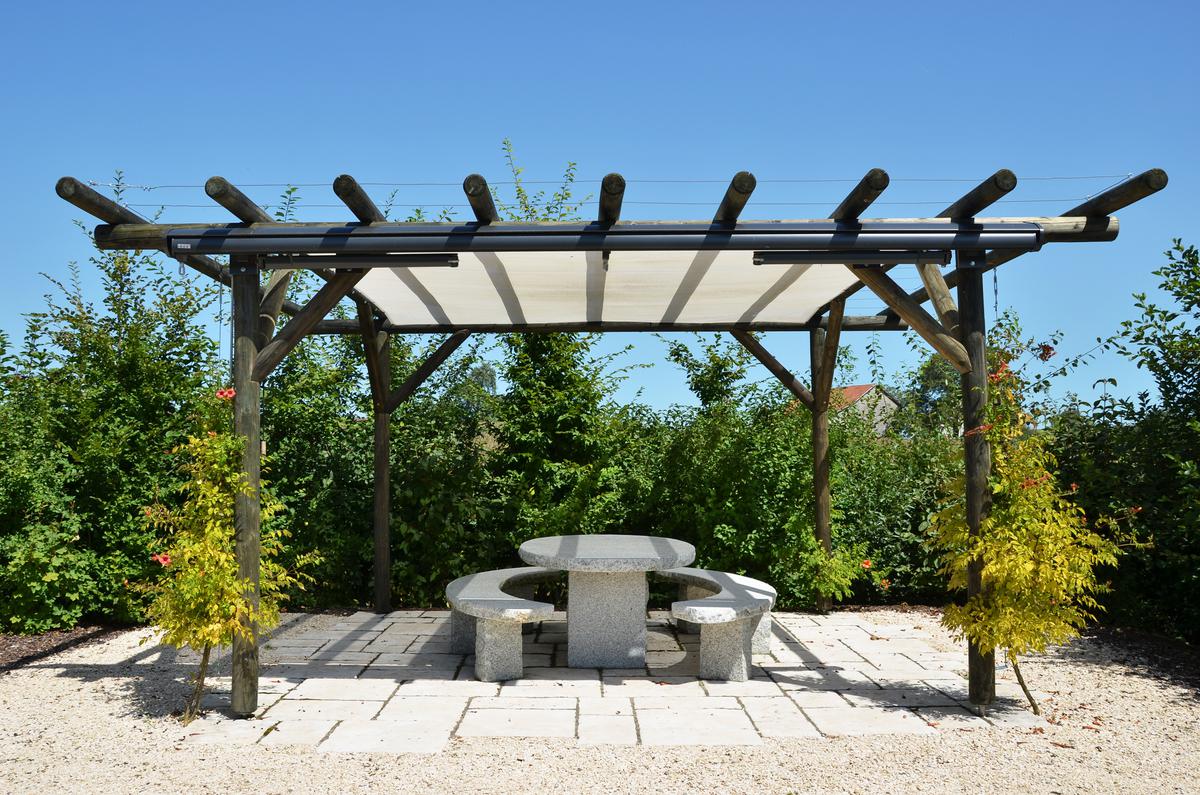
Shade sails are an unconventional yet brilliant idea for pergolas.
Although shade sails aren’t something you’d normally associate with pergolas, they do make pretty decent pergola canopies. Rectangular ones can particularly work just fine. Simply use the installation hardware that comes with the shade sail as per the instructions and you’ll be enjoying your pergola in no time.
Shade sails are naturally designed for protecting against rain and sunlight. And fastening them to the structure is actually easier than the standard method of finding a post or attaching it to the side of the house. Consider installing the shade sail beneath the pergola beams to avoid altering the look of the structure.
10. Reinforce Your Pergola With Wood Planks
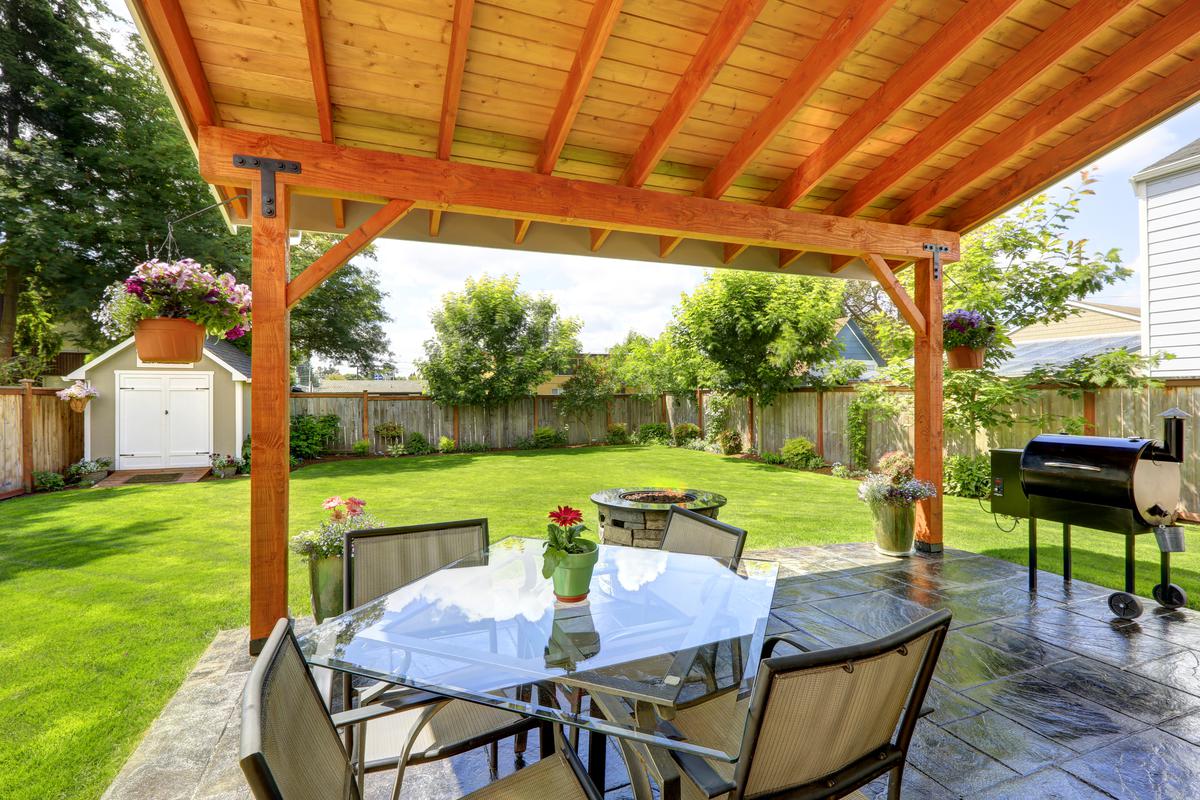
A pergola roof consisting of wood planks can perfectly correspond with the color palette of your backyard.
Another waterproof pergola cover idea is to reinforce it using wood planks. The process is a lot like building a deck. The main difference is that you’d be laying the planks on top of the pergola instead of under it. Make sure to use weather-resistant wood such as cedar or pressure-treated boards. You may also want to form a slight slope so that water from rain doesn’t pool on top — which would otherwise cause the wood to rot. This is especially crucial if you’re preparing your patio for winter.
11. Install Pergola Roof Panels
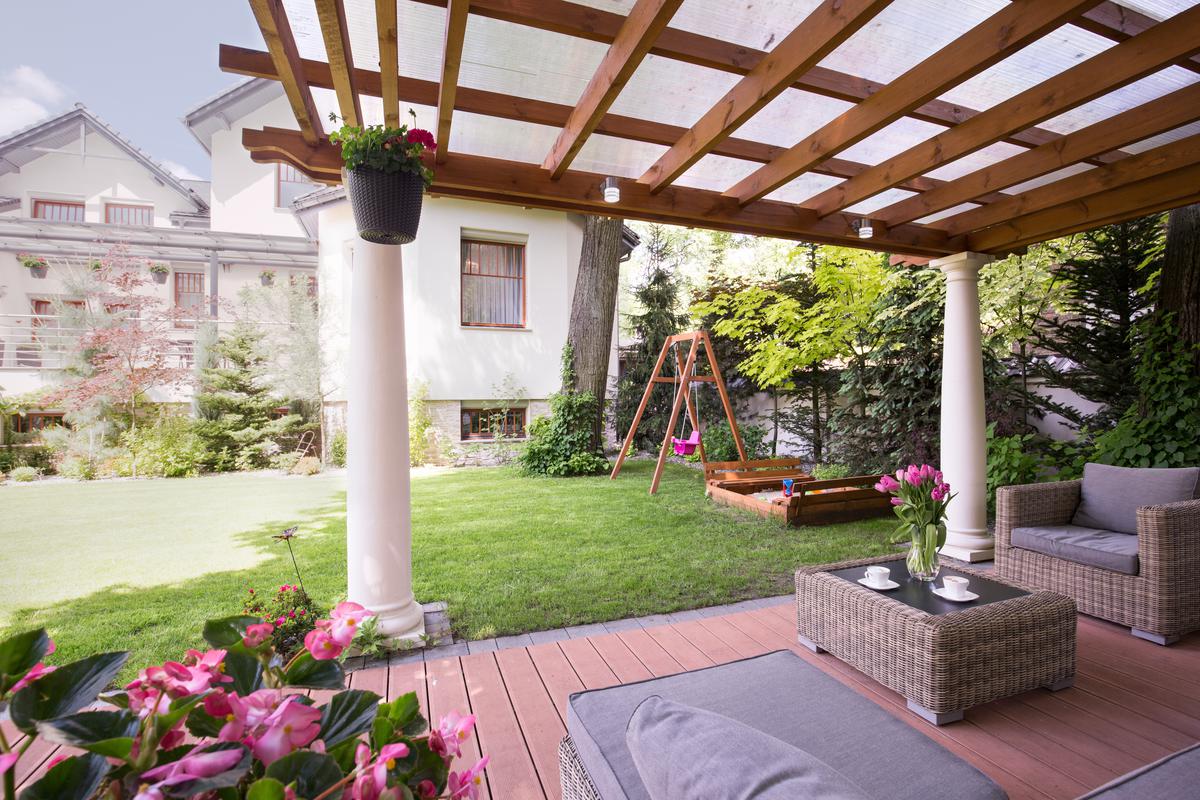
Plastic roof panels provide shade while allowing some light to filter through the pergola roof.
Available in a range of materials, such as tin and plastic, pergola roof panels allow you to enjoy your outdoor seating area regardless of the weather. You can install these directly above the pergola. Plastic roof panels, for instance, are even available in clear form in case you don’t need much shade. As with wood planks, creating a slight tilt allows water from rain to run off. Neglecting this step is one outdoor space design mistake you definitely want to avoid.
12. Incorporate Color and Aroma Into your Pergola
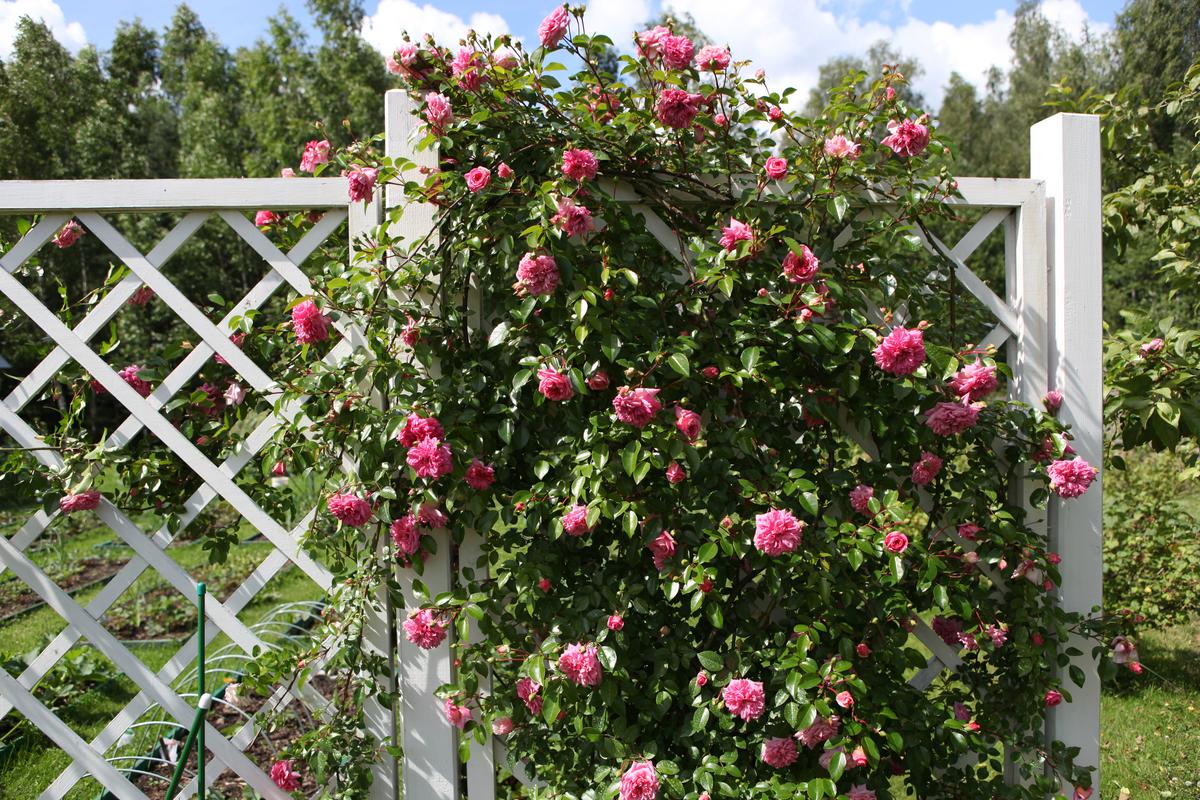
Climbing roses not only add some shade and privacy to your pergola but also a splash of color and fragrance.
Pergola ideas wouldn’t be complete without adding a dash of color and aroma. Climbing roses, for instance, are an excellent choice for incorporating a pleasant vibe to your pergola — while adding a bit of shade in the process. You’ll even gain a bit more privacy on a patio that’s out in the open. In addition, you’re spoilt for choice when it comes to the climbing rose types so you’re sure to find one that reflects your sensibilities.
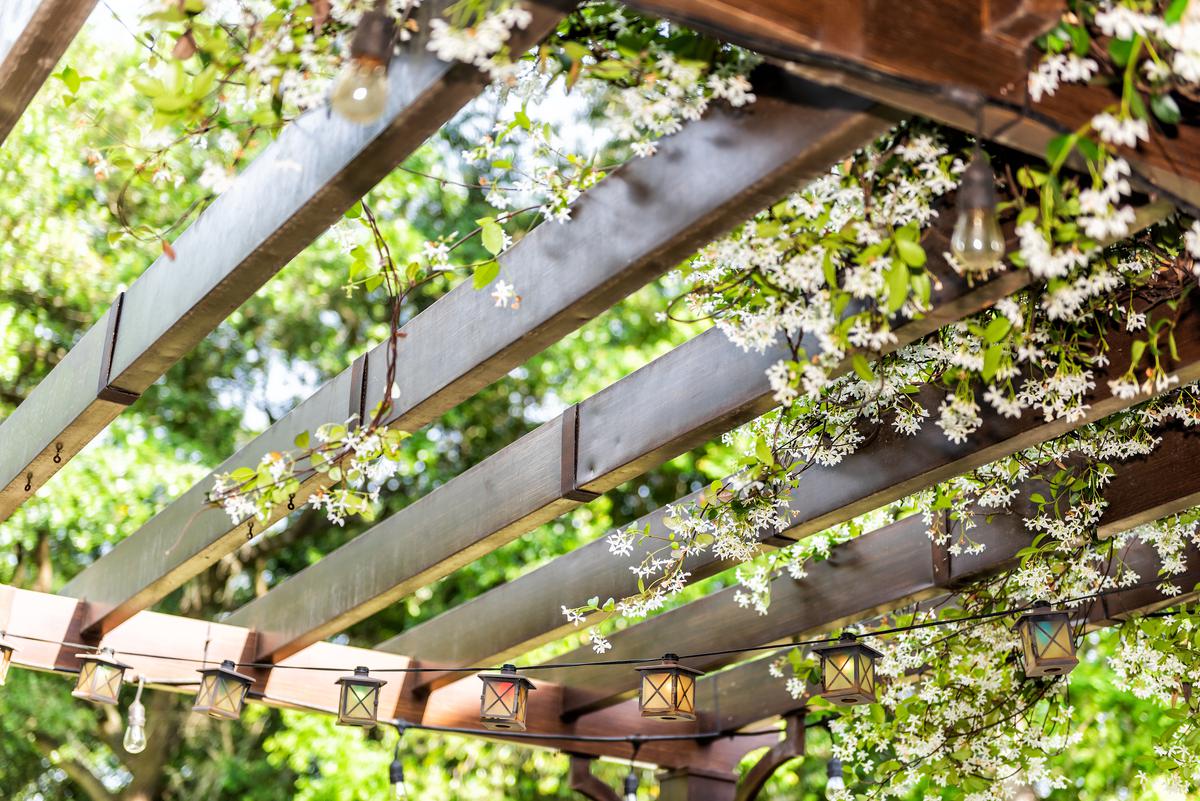
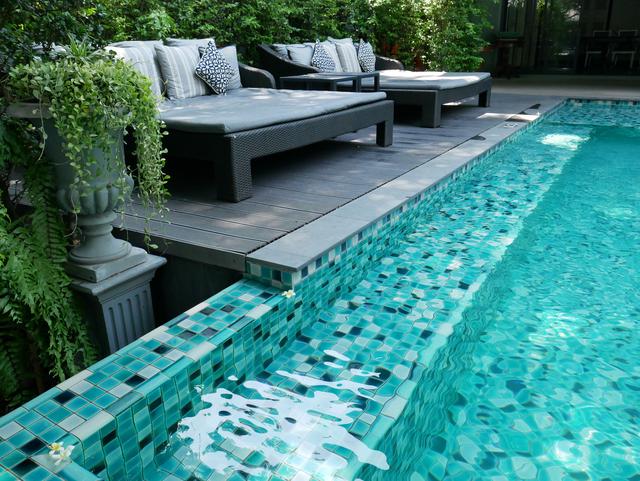

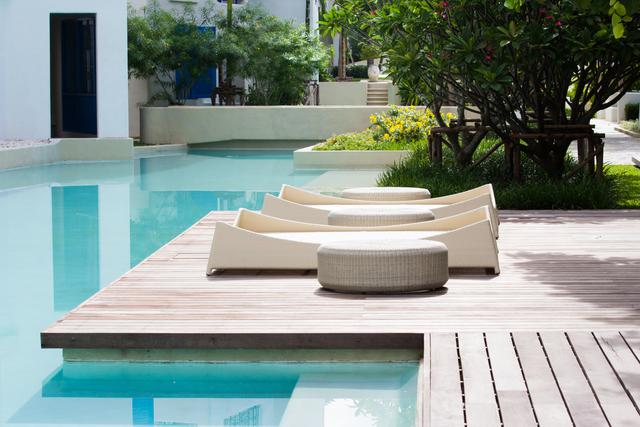
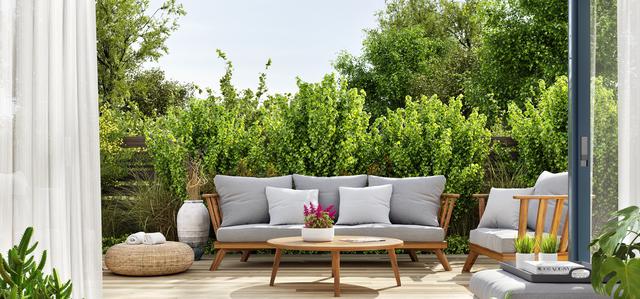
comments